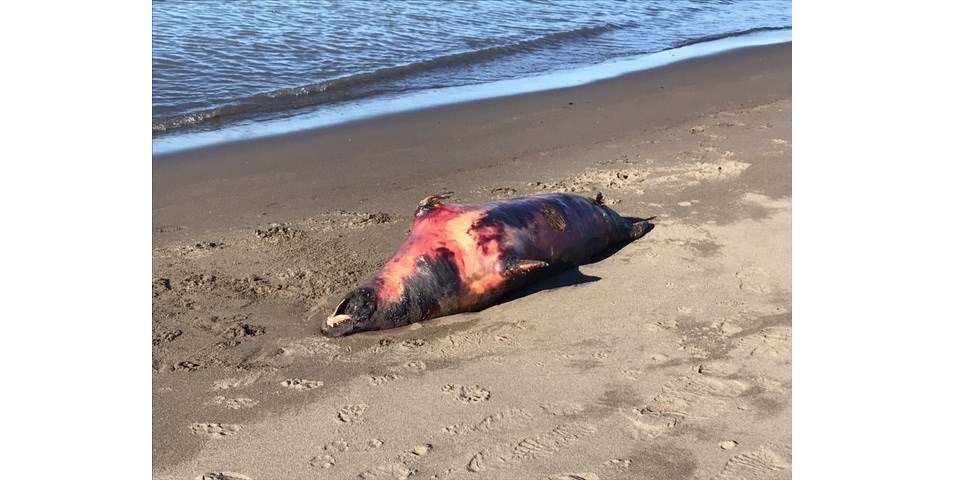A gruesome sight was seen at Garry Point Third Beach last weekend, much to the dismay of visitors and residents alike.
Local resident Britt Christensen was walking her dog as usual when she spotted what she thought was a log. When she got closer, she realized it was a dead sea lion or seal.
“It’s probably six feet long if not eight and quite big,” she said. The carcass was quite deteriorated, according to Christensen, but she could see two fang-like teeth and its flippers.
“There’s no fur left on it. And you can see there’s a hole on one side.” The lower half of its jaw was also missing.
By the time Christensen spoke to The Richmond News, the carcass had been lying on the beach for six days.
“I felt sick and sad, and there it was washed up. And to see it lay there day after day… It’s not a good thing for kids to see,” she said. At times, crows were also spotted picking at the corpse.
Christensen reported it to the city last Thursday but did not hear back.
“Nobody took any information. They just said they’d get back to me after passing me around to different departments that had nothing to do with this.
“It was not taken very seriously — at least, that’s how I felt,” she said.
A few Richmondites built a primitive barrier with logs around the carcass to stop kids and dogs from going up to it, Christensen added.
“Several of us have called the city… And it’s still sitting there when families wanted to go down to the beach and play,” she said on Tuesday.
Later on Wednesday, city spokesperson Clay Adams told the News that the seal was no longer on the beach, possibly washed away by the tides.
“When they do appear, shifting tides often remove them into the water as part of nature’s cycle before they are even noticed,” he said.
There was only one instance in recent years when the city had to intervene to remove a dead seal found on the beach at a dog park.
Adams added that deceased marine animals are “seemingly not a regular occurrence on city beaches.”
Christensen confirmed on Thursday that the carcass is still in the area, although it has "relocated a couple of times."
"[It is] camouflaged a bit by logs but has totally turned black and the reek is unmistakable!" she said.
Dead marine mammals that aren’t navigational hazards are a municipality’s responsibility, said Lara Sloan, spokesperson of Fisheries and Oceans Canada (DFO). But the DFO might want to conduct necropsy on the carcass if it’s an animal listed under the Species at Risk Act.
“These animals may provide important details as to why a population is at risk,” she said.
One species each of seal and sea lion are listed as species at risk — the Lacs des Loups Marins Harbour Seal that lives exclusively in freshwater and the Steller sea lion.
If the mammal is suspected to be a species at risk, it should be reported to the DFO, ideally including photos and hopefully before it gets swept away by the tides.
According to Adams, the best way to report dead marine mammals is to call the city’s Parks department at 604-244-1242.
“We will work with the appropriate department/ agency to determine next steps,” he said.
As of Friday, the seal can still be spotted on the beach. But the city is "hesitant to intervene" as deceased marine animals are "a part of nature's cycle."
Adams noted that the carcass does not necessarily constitute a risk to people or animals despite the smell, and suggested that pet owners keep their dogs away from the carcass.
"Our expectation is that the animal will wash back out again as tides change, eventually becoming part of the ecological food chain," he said.



